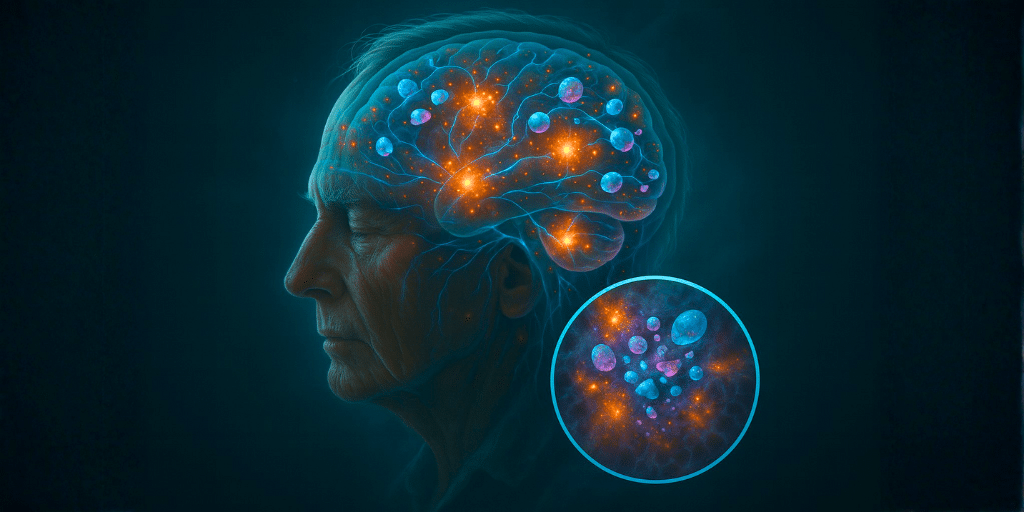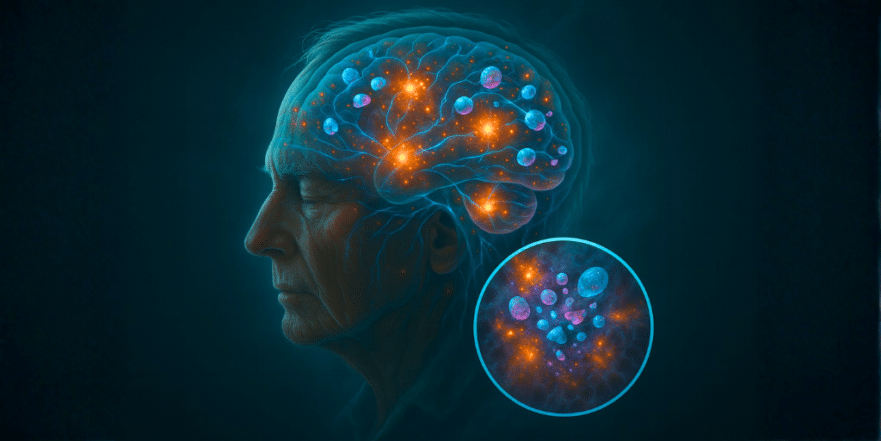
Have you ever wondered what really causes the memory loss and confusion associated with dementia? While Alzheimer’s disease often takes the spotlight, new research is revealing that another major cause, vascular dementia, is more complex than we thought—and it might be linked to a surprising new factor: plastic.
A groundbreaking study from a University of New Mexico (UNM) researcher, Dr. Elaine Bearer, is changing how we look at dementia. Her work not only proposes a better way to classify the damage to the brain’s blood vessels but also uncovers the alarming presence of tiny plastic particles in the brains of those with the disease. This could revolutionize how we diagnose and treat dementia in the future.
Key Takeaways
- A New Way to Classify Dementia: Researchers have developed a new system to classify the different types of brain damage caused by vascular dementia, a condition resulting from issues with the brain’s small blood vessels.
- Plastics Found in the Brain: For the first time, nano- and microplastics have been identified in human brain tissue, with higher amounts found in individuals who had dementia.
- Link to Disease Severity: The quantity of plastic particles appears to correlate with the severity of dementia symptoms and the level of brain inflammation.
- Hope for Better Treatments: By better understanding the specific types of damage, scientists hope to develop more effective, targeted treatments and potentially find a cure.
Why We’ve Been ‘Flying Blind’ with Vascular Dementia
Vascular dementia is a type of memory and thinking problem caused by damage to the brain’s tiny blood vessels. When these vessels are harmed by conditions like high blood pressure, clogged arteries, or diabetes, they can’t deliver enough oxygen and nutrients to your brain. This can lead to tiny strokes and brain cell death. According to Dr. Bearer, we haven’t had a clear system for defining the different kinds of vascular damage. “We’ve been flying blind,” she said. “We haven’t fully defined the different kinds of vascular damage, so we haven’t known what we’re really treating.”
A Closer Look at the Brain’s Damage
Using special microscopes and stains, Dr. Bearer examined brain tissue from people who had passed away with dementia. Her team identified 10 distinct disease processes that can harm the brain by blocking blood flow, causing leaks, and triggering inflammation. This detailed analysis revealed that many patients who were diagnosed with Alzheimer’s also showed significant signs of these vascular problems. In New Mexico, for instance, it’s suspected that about half of all Alzheimer’s patients also have this small vessel disease. This overlap shows just how important it is to understand all the factors contributing to dementia.
The Shocking Discovery: Plastics in Our Brains
Perhaps the most startling part of the research is the discovery of plastic in the brain. “Nanoplastics in the brain are a new concern,” Dr. Bearer stated. Her research found that people with dementia had more of these tiny plastic particles in their brains than those without. What’s more, the amount of plastic seemed to directly relate to how severe the dementia was. These plastics were also linked to higher levels of brain inflammation, suggesting they could be an active contributor to the disease process. This finding is so new that, as Dr. Bearer noted, “All our current ideas about dementia may need to change now that we know this.”
What This Means for the Future of Dementia Treatment
This research provides a critical roadmap for the future. By creating a clear system for classifying vascular dementia, doctors can better diagnose the condition in living patients and understand its severity. This knowledge is the first step toward developing targeted treatments that address the specific type of damage occurring in a patient’s brain. The National Institutes of Health (NIH) is now considering forming an expert group to create new national guidelines for diagnosing vascular dementia, a move Dr. Bearer strongly supports. With continued research, there is renewed hope for finding better treatments and possibly even a cure.
Conclusion
Dr. Bearer’s work marks a major step forward in our fight against dementia. By providing a detailed framework for understanding vascular damage and uncovering the unexpected role of microplastics, this research opens up new avenues for diagnosis and treatment. It reminds us that the causes of dementia are complex and that new discoveries can lead to powerful new ways to protect our brain health.
Scientific References
- Bearer, E. L. (2024). Histopathology of Small Vessel Disease of the Brain: A Proposed Neuropathologic Staging System. The American Journal of Pathology. Published online May 21, 2024. URL: https://doi.org/10.1016/j.ajpath.2024.05.009
- For further reading: Early heart rhythm problem linked to higher dementia risk. Knowridge Science Report.
- For further reading: Green leafy vegetables may help reduce Alzheimer’s risk. Knowridge Science Report.

